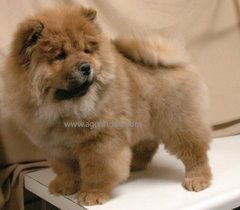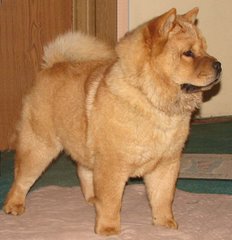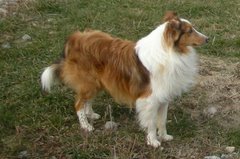Did You Know Dogs Blush Too?
“Man is the only animal that blushes -- or needs to.” Mark Twain
How special does that make us?
Not very! The Pharaoh Hound and Ibizan both blush. Both breeds, when happy or
excited are suffused with a rosy glow, from the tips of the ears all the way to the noses.
Granted, the dogs aren't likely to have nearly as many varying reasons to turn red as we
do, but that's hardly something for us to brag about.
The question is, do they ever blush from embarrassment brought on by our actions?
Maybe all those times when our dogs have waited until we're bragging on something
about their behavior and they choose that moment to make liars of us is just payback
being, well, appropriately, a bitch.
Possibly the next time your boss drops by the house and your faithful sidekick waits
until the silence wrapped around your total concentration on how best to begin to
explain your next radiantly intelligent, innovative proposal -- the one that is going to
score that promotion and whopping raise -- is complete to let one of those silent but
deadly stench bombs loose, the kind that, because they're quiet, no one ever quite
believes that story “the dog did it,” it's payback for those photos you took of your dog
with a funny hat tied to his head. If your dog could blush to express those feelings he
might not be forced to seek vengeance.
Another breed with an unusual capacity generally thought to be reserved for humans is
the Basenji. The breed that yodels. It might be argued by some that listening to a
Basenji yodeling is a shade more pleasant to hear than a human yodeling, Jewel and
her disturbing ability to yodel in reverse notwithstanding.
Thankfully, there's not a clogging dog -- that we know of yet, anyway.
If you believe in coincidence, it's an odd one that these breeds all strongly resemble
pictures and carvings of the Tesem dogs found on stelae and in tombs of ancient Egypt,
as do the Pharaonenhund. The descriptions are strikingly similar: the pricked ears,
lithe, muscular body, forehead wrinkles, coloration. The Basenji tail is typically held
more tightly curled over the back, although when running it is usually held out straight
behind the dog, adding balance. The Pharaoh Hound's tail may be held curled over the
back or relaxed.
But evidence and what limited knowledge we have gleaned to date from our DNA
research into the origins of dogs points to the conclusion that the dogs of the type
Pharaonenhund are indigenous to the island of Malta and did not, in fact, have their
origins in Egypt as so many wish to believe and the nomenclature used by registries
“Pharaoh Hound” infers.
If you don't believe in coincidence, the similarities between the dogs are fascinating and
lead to speculation as to what future DNA research into canine origins will reveal.
Current studies are fairly limited, both by our still growing understanding of genetics and
by the extremely small pool of breeds and examples of those breeds whose DNA has
been entered into the databases being used. Archaeology has long pointed to the Dark
Continent as one of the most likely cradles of the human species and even today the
diversity of creatures found there is staggering. It isn't a great leap to suppose that a
primary branch on the family tree of canis lupus familiarus has its origins there as well. It
would be only fitting, as homosapiens and canis l. familiarus have walked through time
together for many ages.
After all, as they say, “men are dogs.”
Brought to you by Susan Handwell of www.pet-super-store.com; where you can get Dog Beds as well as Dog Doors
Wednesday, July 22, 2009
Subscribe to:
Post Comments (Atom)







No comments:
Post a Comment